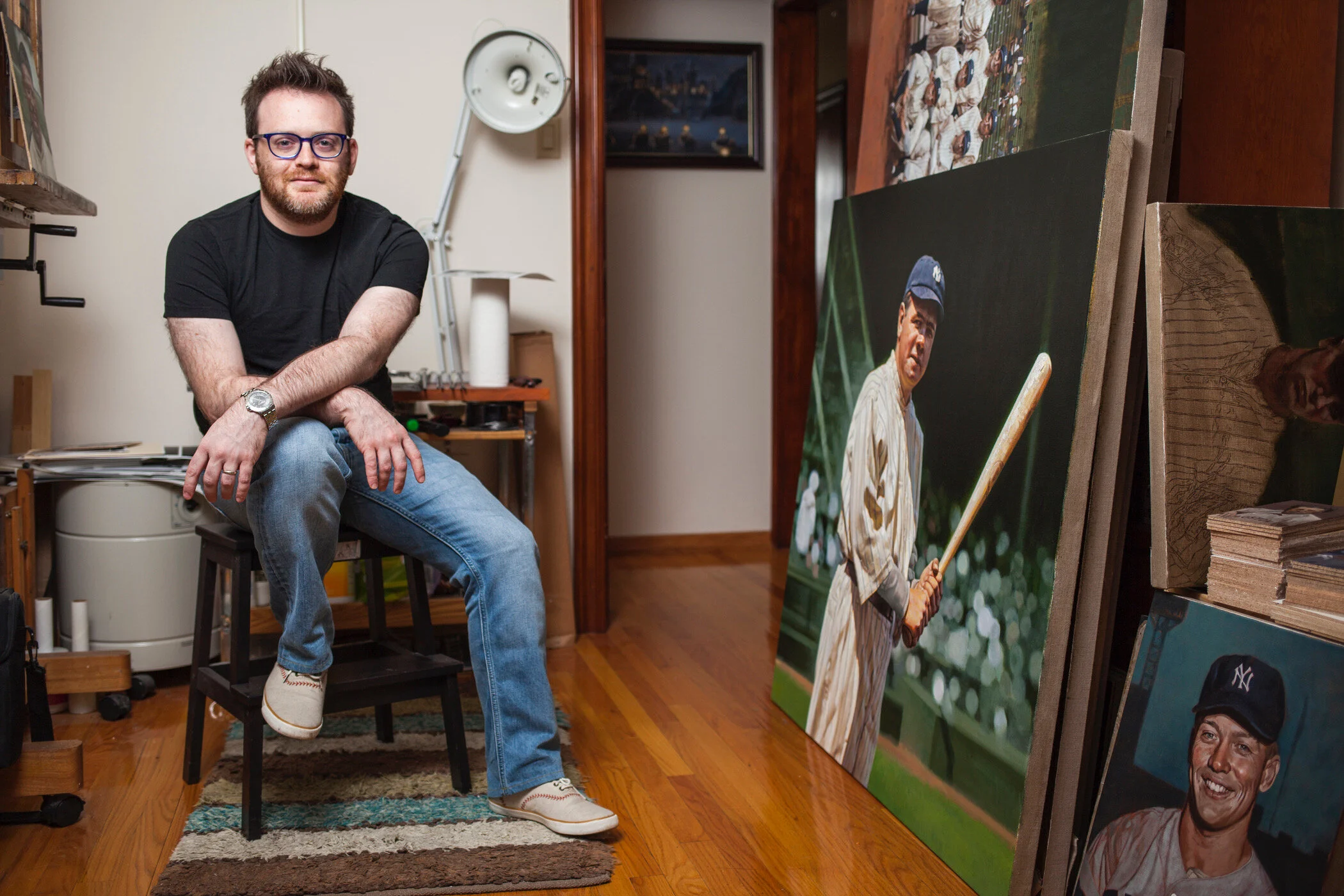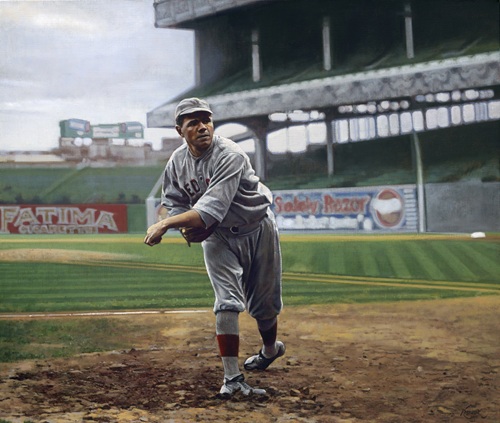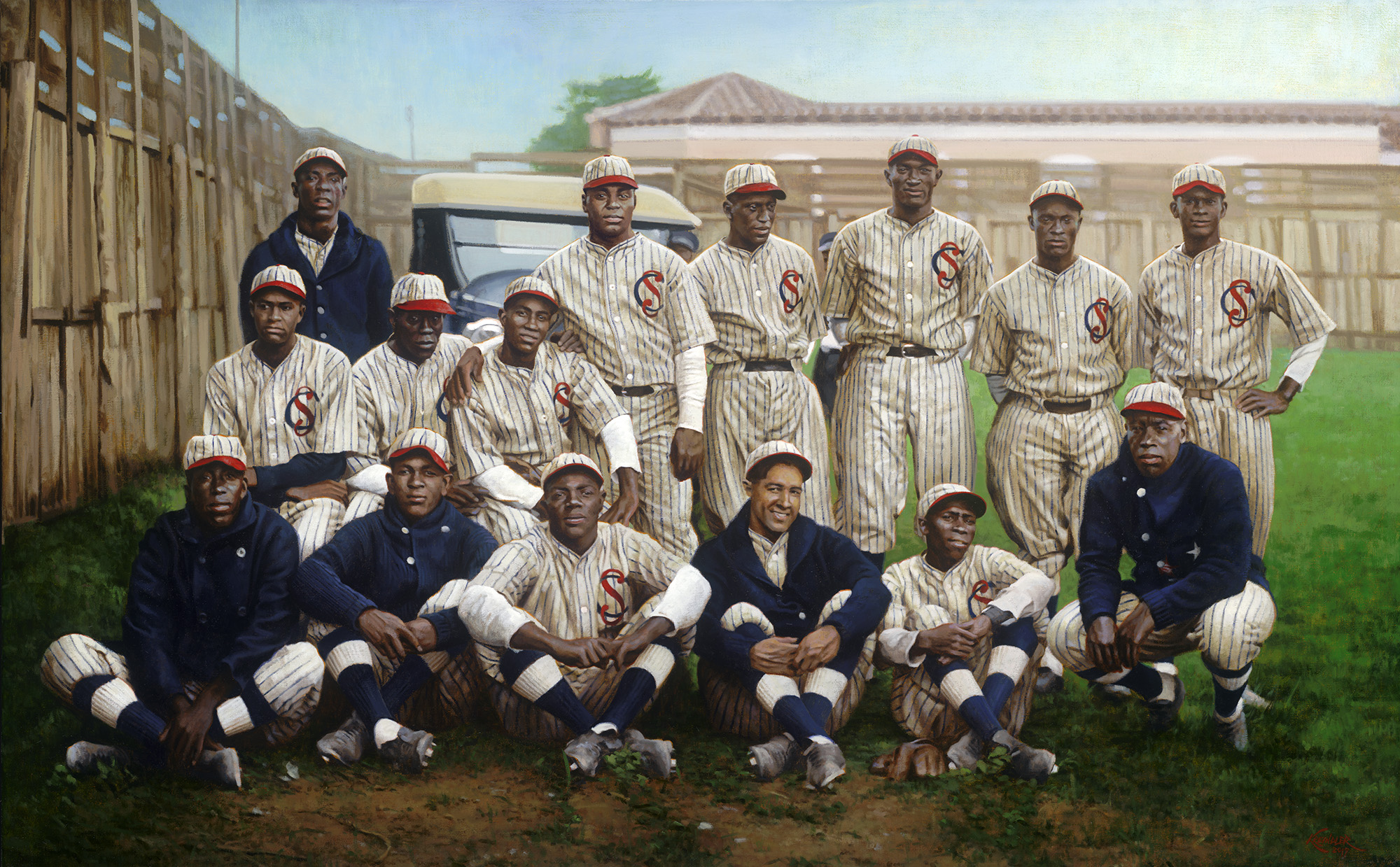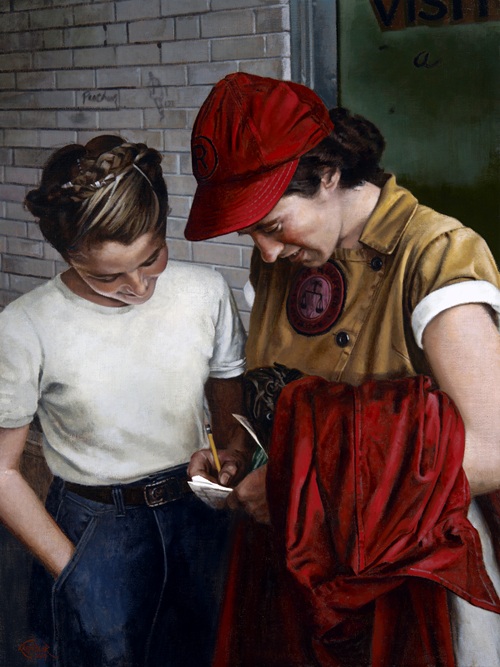Q&A with REA: A Conversation with Baseball Artist Graig Kreindler
PJ Kinsella — August 19 2025

Graig Kreindler is one of the most accomplished and recognizable artists in baseball, and his work depicts some of the game’s greatest players from the past and present in stunning detail. In this Q&A, he outlines his path to becoming a professional artist, his lifelong love of baseball and what all-time greats his dream painting would include.
Tell us about your path to becoming a professional artist, and more specifically, an artist focusing on the greats throughout baseball history. Who were some of your inspirations as an artist and as a baseball fan?
My path to becoming a professional artist started when I was around three or four years old. A child of the 1980s, I grew up drawing characters from the cartoons I was watching regularly. He-Man, G.I. Joe, Thundercats...that was the stuff I really gravitated to. A couple of years into that, I discovered what was left of my father's baseball collection. I was most attracted to the cards from the late 1940s and early 1950s, not only because those players were the ones my father spoke most fondly of, but also the fact that the majority of those cards were illustrated, rather than utilizing real photography. Something subconsciously clicked in my head that it was something I could do, not necessarily as a vocation, but to combine my love of art and baseball. I could draw Mickey Mantle, my dad's hero, and could get the proverbial pat on the head.
Fast-forward through my adolescent years when I was less interested in baseball, and more interested in things like girls (not that they were interested in me). Comic books and fantasy art was the stuff I started to get into, while baseball went to the backburner. I ended up going to the School of Visual Arts in Manhattan to major in illustration--the goal being that I would become a fantasy/science fiction book cover artist. I worked relentlessly while I was in school, honing my craft, soaking up every influence I could; however, eventually it started to not feel “right.” The subject matter didn't tug at my heartstrings like I thought it should.
By the time I was a senior, I was floundering a bit. Though I was still working hard, I wasn't really connecting to the artwork I was making. It wasn't until one day in my portfolio class where everything changed. The teacher usually gave us pretty general assignments, so we had the freedom to interpret them anyway we wanted to. When he asked us to illustrate “a relationship,” for whatever reason, the first thing that came to mind was one between a batter and a pitcher. As I fleshed out the idea a little more, I decided that it would be a nice opportunity to paint Mickey Mantle--something for my father, again. As I got into the assignment, I knew that baseball fans (especially my dad) were anal about its history, so not only did Mickey Mantle have to look like Mickey Mantle, but the ballpark had to look right, the uniforms had to look right. Everything had to look right. That being said, I enjoyed the research process and the actual painting immensely. Those heartstrings I talked about were finally pulled, and pulled hard. In the end, I was really happy with the piece, as was my instructor, and thankfully, my dad. That was what really got this snowball rolling.
In terms of artistic influences, really, there are too many to even mention. The first ones that come to mind are Norman Rockwell, Howard Pyle, John Singer Sargent, Anders Zorn, Joaquín Sorolla, Cecilia Beaux, Dean Cornwell, Claude Monet, George Bellows, Albert Bierstadt, Richard Schmid, Gregory Manchess, Kinuko Craft, Jenny Saville, Alyssa Monks, Kadir Nelson, Henry Ossawa Tanner...seriously, the list goes on and on.
The biggest, and perhaps most important one, is one of my teachers from SVA, Peter Fiore, who has since become a dear friend. Peter (www.peterfiore.com) is a former illustrator and now a fine art landscape painter who taught me literally everything I know about light and color, which I feel are the two driving factors in my work. I can't even properly articulate how monumental his influence has been on my life.
Most of your paintings depict a single player. If you had to paint one moment from baseball history, which moment would you choose to portray on your canvas?
In thinking about this a lot, if there was one single moment from baseball history that I would paint, I keep coming back to Jackie Robinson's debut. I don't necessarily have a composition in mind, nor do I even think it needs to include anybody but him, it's just that the profundity of the moment--both in sports and in the history of this country--cannot be overstated. It could even be a bareboned image of him soft-tossing on the field before the game, maybe with the famous Ebbets Field rightfield scoreboard and advertisements behind him.
What's the best piece of advice you ever received as an artist and what's a piece of advice that you would give to young, aspiring artists aiming to get to where you are today?
Ooohh, best advice. There's been a LOT of advice I've received over the years, and really, all of it is good, so it's hard to pick one that's the best of the batch. One of my teachers once told me that "as an artist, it's important to keep your overhead low." Sound advice for anyone, surely. There aren't necessarily a ton of bon mots that I can recall, but definitely some strong sentiments. One in particular when I was first starting my career was about treating it like a marathon and not a sprint. In other words, it takes time to build a name for yourself--it doesn't happen overnight. And obviously working hard is probably the most important part of the equation. The idea that "hustle beats talent when talent doesn't hustle" is real. Be relentless.
What are some of your favorite pieces of your own artwork?
I have a lot of favorite paintings that I've done (not to sound self-serving), and they're all for different reasons. I really LOVE painting what Gary Cieradkowski calls "outsider baseball" figures, especially folks from the Negro and Latin American Leagues, and the All American Girls Professional Baseball League (AAGPBL). I've done portraits of José Méndez, Satchel Paige, Bill Foster and Martín Díhigo that I feel are really strong and have a real presence to them. Also, a larger team painting of the 1923-24 Leopardos de Santa Clara, one of the best teams in the history of Cuban baseball, fits the bill.
Speaking of team paintings, one I keep coming back to with pride is a large one I did of the 1927 Yankees. It was so incredibly involved, what-with 31 main figures (30 of whom are in pinstripes that undulate through space) that need to be treated accurately and also portrayed consistently, so a ton of research went into things like eye and hair color. Adding to that, there are 50+ spectators in the stands, all of whom need to have their own distinct personalities as well. And the stadium architecture--lots of straight lines and angles. Really, plenty of blood and sweat (and tears) went into that one, and six years or so after delivering it (to a VERY patient client), it's still one of my favorites.
You're given the task of creating a new mural designed to encapsulate the history of baseball but you can only include five players. Which five are you including and why (yes, this question is hard and unfair)?
A mural that can only include five players...to encapsulate all of baseball history...150+ years of it...that's quite a task, but I'll do my best.
1) Albert Spalding - An excellent pitcher and team captain in his day, he may be better known for his feats as an executive (helped draft the National League's constitution), ambassador for the game (barnstormed with teams around the world in 1888-89) and sporting goods manufacturer (opened a store with his brother and later became THE manufacturer and distributor of equipment).
2) Rube Foster - One of the greatest pitchers in black baseball history, he went on to become manager of some of the more memorable independent black clubs of the day. And when that wasn't enough, he spearheaded the founding of the Negro National League in 1920, which became the first "official" league of its kind.
3) Babe Ruth - This is a no-brainer. The face of baseball the world over, even over 75 years after his death. The perfect confluence of otherworldly talent; a loud, positive personality, an era ripe for both change and heroes; and also a little bit of luck.
4) Jackie Robinson - This is another no-brainer. The importance and profundity of Jackie Robinson's journey cannot be overstated, be it as a baseball player, civil rights leader, or an American. This country is better because of him.
5) Curt Flood - The last spot is where I struggled the most and could easily have picked 10 other guys, but I landed on Flood because of his main contribution to the game. Certainly a great player (7-time Gold Glove winner, 3-time All-Star, 2-time World Champion) he's probably best remembered as the man who took on baseball's reserve clause in 1969. Though he lost and took his appeal all the way to the Supreme Court, his efforts ultimately paved the way for free agency and an independence in the sport that truly hadn't existed.
This story was initially published in the 2025 edition of Hobby Intricacies which can be read in its entirety here.




